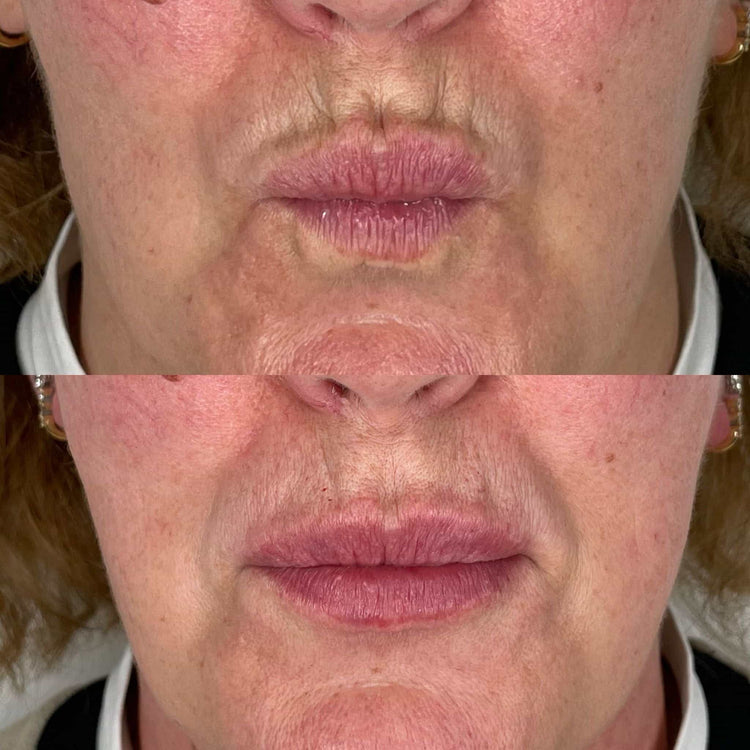Minimizing Swelling and Bruising
Minimizing swelling and bruising is an essential part of achieving optimal results after a dermal filler treatment. By following these simple tips, you can help reduce discomfort and promote healing, allowing you to enjoy your newly enhanced features sooner.
Applying Cold Compresses
Applying cold compresses is one of the most effective ways to minimize swelling and bruising after dermal filler treatment. Cold temperatures constrict blood vessels, which helps reduce inflammation and fluid buildup.
Apply a cold compress, such as an ice pack wrapped in a towel, to the treated area for 15-20 minutes at a time, several times per day. Avoid direct contact between ice and your skin, as this can cause frostbite.
Elevating the Treated Area
Elevating the treated area can also help minimize swelling. Gravity helps drain excess fluid away from the injection site, reducing puffiness.
Whether it’s your lips, cheeks, or under-eye area, prop up the area with pillows while you rest. Keeping it elevated for several hours after the treatment can make a noticeable difference.
Avoiding Certain Activities

In addition to these techniques, certain activities should be avoided following dermal filler treatments to minimize the risk of complications and promote optimal healing.
Refrain from Strenuous Exercise
Avoiding strenuous exercise is crucial in the days following your treatment. Strenuous activity can increase blood flow and pressure, potentially leading to swelling, bruising, or displacement of the filler.
It’s best to stick to light activities like walking for the first few days after your treatment. Gradually increase the intensity of your workouts as you feel comfortable and your body heals.
Limit Facial Massage
Limit facial massage in the days following dermal filler treatments. Massage can disrupt the placement of the filler, potentially leading to unevenness or migration.
It’s important to allow the filler to settle properly before engaging in any facial manipulations.
Stay Away from Excessive Sun Exposure
Staying away from excessive sun exposure is crucial after dermal filler treatments. Sun rays can break down hyaluronic acid, the main ingredient in many dermal fillers, leading to a faster loss of volume and diminished results.
Minimize your time in direct sunlight, especially during peak hours when UV rays are strongest. When outdoors, wear protective clothing such as hats and sunglasses, and apply broad-spectrum sunscreen with an SPF of 30 or higher.
Proper Skincare Routine
Achieving the best results from dermal filler treatments goes beyond just the injection process. Proper aftercare is essential for minimizing swelling, bruising, and ensuring long-lasting results. By following a few simple guidelines, you can optimize your healing process and enjoy your enhanced features sooner.
Gentle Cleansing
Gentle cleansing is crucial for maintaining healthy skin after dermal filler treatment. Avoid harsh soaps or scrubs that can irritate the treated area and disrupt the healing process.
Opt for a mild, fragrance-free cleanser formulated for sensitive skin. Gently cleanse your face twice daily with lukewarm water, avoiding excessive rubbing or scrubbing.
Hydrating Moisturizer
A hydrating moisturizer is essential for maintaining skin health after dermal filler treatments. Hydration helps plump the skin, reduce the appearance of fine lines, and promote a smoother texture.
Look for a moisturizer that contains hyaluronic acid, as it’s known for its excellent moisture-retaining properties. Apply the moisturizer gently to the treated area twice daily, morning and night, following the instructions provided by your practitioner.
Sunscreen Protection
Minimizing swelling and bruising is an essential part of achieving optimal results after a dermal filler treatment. By following these simple tips, you can help reduce discomfort and promote healing, allowing you to enjoy your newly enhanced features sooner.
Applying cold compresses is one of the most effective ways to minimize swelling and bruising after dermal filler treatment. Cold temperatures constrict blood vessels, which helps reduce inflammation and fluid buildup. Apply a cold compress, such as an ice pack wrapped in a towel, to the treated area for 15-20 minutes at a time, several times per day. Avoid direct contact between ice and your skin, as this can cause frostbite.
Elevating the treated area can also help minimize swelling. Gravity helps drain excess fluid away from the injection site, reducing puffiness. Whether it’s your lips, cheeks, or under-eye area, prop up the area with pillows while you rest. Keeping it elevated for several hours after the treatment can make a noticeable difference.
In addition to these techniques, certain activities should be avoided following dermal filler treatments to minimize the risk of complications and promote optimal healing. Avoiding strenuous exercise is crucial in the days following your treatment. Strenuous activity can increase blood flow and pressure, potentially leading to swelling, bruising, or displacement of the filler. It’s best to stick to light activities like walking for the first few days after your treatment. Gradually increase the intensity of your workouts as you feel comfortable and your body heals.
Limit facial massage in the days following dermal filler treatments. Massage can disrupt the placement of the filler, potentially leading to unevenness or migration. It’s important to allow the filler to settle properly before engaging in any facial manipulations.
Staying away from excessive sun exposure is crucial after dermal filler treatments. Sun rays can break down hyaluronic acid, the main ingredient in many dermal fillers, leading to a faster loss of volume and diminished results. Minimize your time in direct sunlight, especially during peak hours when UV rays are strongest. When outdoors, wear protective clothing such as hats and sunglasses, and apply broad-spectrum sunscreen with an SPF of 30 or higher.
Gentle cleansing is crucial for maintaining healthy skin after dermal filler treatment. Avoid harsh soaps or scrubs that can irritate the treated area and disrupt the healing process. Opt for a mild, fragrance-free cleanser formulated for sensitive skin. Gently cleanse your face twice daily with lukewarm water, avoiding excessive rubbing or scrubbing.
A hydrating moisturizer is essential for maintaining skin health after dermal filler treatments. Hydration helps plump the skin, reduce the appearance of fine lines, and promote a smoother texture. Look for a moisturizer that contains hyaluronic acid, as it’s known for its excellent moisture-retaining properties. Apply the moisturizer gently to the treated area twice daily, morning and night, following the instructions provided by your practitioner.
Managing Discomfort
Achieving the best results from dermal filler treatments goes beyond just the injection process. Proper aftercare is essential for minimizing swelling, bruising, and ensuring long-lasting results. By following a few simple guidelines, you can optimize your healing process and enjoy your enhanced features sooner.
Over-the-Counter Pain Relievers
Over-the-counter pain relievers like ibuprofen or acetaminophen can be helpful in managing discomfort after dermal filler treatment. They can reduce inflammation and alleviate any aches or tenderness that may arise.
However, it’s important to follow the recommended dosage instructions on the product label and consult with your doctor if you have any underlying medical conditions or are taking other medications.
Warm Compresses
Warm compresses can be beneficial in helping reduce discomfort and promote blood flow to the treated area after dermal filler treatments.
Apply a warm compress, such as a warm washcloth soaked in warm water, to the injection site for 15-20 minutes at a time.

Be sure the temperature is comfortable and avoid excessively hot temperatures which could irritate the skin.
Following Up with Your Provider
Following up with your provider after dermal filler treatment is essential for ensuring optimal results and minimizing any potential complications. Your provider can assess your healing progress, answer any questions you may have, and provide guidance on proper aftercare.
Scheduled Check-Up Appointments
Aftercare is crucial for maximizing the benefits of dermal fillers and promoting a smooth healing process.
- Schedule a follow-up appointment with your provider within the timeframe they recommend. This allows them to assess your progress, address any concerns, and ensure you are on track for optimal results.
- Don’t hesitate to contact your provider if you experience any unusual symptoms or have questions about your healing process.
Addressing Any Concerns or Side Effects
Following up with your provider after dermal filler treatment is essential for ensuring optimal results and minimizing any potential complications. Your provider can assess your healing progress, answer any questions you may have, and provide guidance on proper aftercare.
Aftercare is crucial for maximizing the benefits of dermal fillers and promoting a smooth healing process.
- Schedule a follow-up appointment with your provider within the timeframe they recommend. This allows them to assess your progress, address any concerns, and ensure you are on track for optimal results.
- Don’t hesitate to contact your provider if you experience any unusual symptoms or have questions about your healing process.
Book your cheek filler treatment today with Dr. Laura Geige at It’s Me & You Clinic
- Why Does My Lip Filler Swell Sometimes - November 1, 2025
- What Is The Difference Between Dermal Fillers And Bum Filler Injections? - October 29, 2025
- What Are The Best CBD Gummy Sweets For Pain Relief - October 28, 2025

